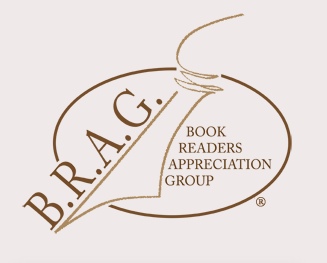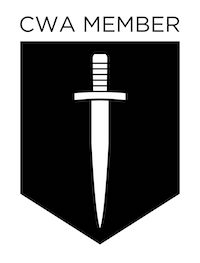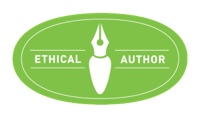 When I recommended The History of Rome (THOR) podcast last December I had no idea that I would be joining the official THOR tour which starts in 10 days, on 24 February.
When I recommended The History of Rome (THOR) podcast last December I had no idea that I would be joining the official THOR tour which starts in 10 days, on 24 February.
I was listening to the regular podcast, wishing I could be there, but the application date had passed and I hadn’t any pennies saved up. As I listened on, and read the comments on the associated site, I felt envious.
It’s a life ambition to see Rome. I’ve visited Ampurias in Spain, Zadar (Zara) in Coatia, the Saalburg on the limes germanicus near Frankfurt, the amphitheatre and beautiful mosaics in Cyprus, Hadrian’s Wall and Caerleon (Isca Augusta) in the UK, Nimes and Orange in France, to name a few Roman sites.
But Rome itself? No.
But something snapped in my brain in early January. Nothing as high-minded as a New Year’s resolution. Suppose I keep waiting ‘until’? Suppose ‘until’ never comes? Horace, the Roman poet, had it right: Carpe diem, quam minimum credula postero (Seize the day, putting as little trust as possible in the future). I dredged through the budget plan and found the dosh.
Excited? Possibly…. Of course, it’s all for research for my Roman-themed novels. Obviously.
Some kind friends have asked for details which I’ve listed below.
In the meantime, I’d better go and look out my marching boots. They say the roads are good, but hard.
—————–
Here’s where I’m going:
25 February, 2012: Museum of Roman Civilization – Walking Tour
After breakfast at the hotel, we’ll begin our journey at the Museum of Roman Civilization which will offer us invaluable context for the rest of the trip. The highlight of the Museum is a huge scale model of how the city would have been laid out during the peak of Rome’s power in the 300’s AD. After the Museum we’ll embark on a walking tour that will take us past Marcellus’s Theatre, Pompey’s Theatre, Piazza Navona (AKA Domitian’s Stadium), the Pantheon and the Column of Marcus Aurelius.
26 February, 2012: Ostia Antica – Hadrian’s Villa
Following an early breakfast we’ll drive down to the ruins of Ostia Antica, Rome’s most important maritime port. The extensive archeological remains of the city will give us an opportunity to see how the average Roman lived their life. Following a lunch break in Ostia we’ll drive up to Tivoli for a tour of Hadrian’s Villa, which will give us an opportunity to see how one of the wealthiest and most powerful Romans of all time lived his life. We’ll close the day with the first of our group dinners.
27 February, 2012: Roman Forum – Palatine Hill – Colosseum
After breakfast, we’ll jump right into the most famous parts of the Eternal City. After cruising by Trajan’s Column and the Imperial Fora, we’ll head into the Roman Forum which features (among other treasures) the old Senate House, the Temple of the Vestas, The Arch of Septimius Severus and the Temple of Julius Caesar. Then we’ll check out the Arch of Titus on our way up the Palatine Hill to visit the remains of the Imperial Palaces. After lunch, we’ll take in the Colosseum, the most impressive classical amphitheatre in the world.
28 February, 2012: Capitoline Museum – Free Time
After three days of sight-seeing we’ll enjoy a well earned half-day. We’ll spend the morning at the Capitoline Museum which features a huge collection of art and artifacts that have been excavated from the city including the famous She-Wolf sculpture, the Consular Fasti, the massive bronze Marcus Aurelius equestrian statue and the foundations of the Temple of Jupiter itself. Then we will break for free time so we can relax, unwind or visit any other attractions not on our official itinerary. Our final evening in Rome will begin (but not necessarily end) with a group cocktail reception.
29 February, 2012: Caracalla Baths – Capua – Sorrento
Breakfast at the hotel will be followed by a tour of the impressive Caracalla Baths, one of the most ambitious recreational facilities on the classical world. Then we’ll say goodbye to Rome and head south to the ancient city of Capua. Once strong enough to challenge Rome for control of Italy during the Second Punic War, the capital of Campania was reduced to serving as a wealthy resort town for Imperial Rome and the ruins of the 2nd largest amphitheatre in Italy remain there to this day. After running around the amphitheatre, we’ll continue south to our hotel in Sorrento where we will enjoy the second of our group dinners.
1 March, 2012: Pompeii
Today we head to the most famous archeological site in the world. Our whole day will be spent amidst the extensive ruins of Pompeii, ruins that have proven to be an invaluable guide as we strive to understand daily life in the ancient world. We have lined up a guide who has worked at the site for years to take us on a special tour of the city that will hit all the highlights including the Villa of Mysteries, the Forum Baths and, of course, the legendary Beware of Dog mosaic.
2 March, 2012: Naples National Archeology Museum – Naples Underground
Following breakfast, we’ll head down to Naples for a visit to the stunning Naples Archaeological Museum, one of the most important repositories of Greek, Roman, Egyptian and Mediterranean artifacts in the world. We’ll enjoy a guided tour through the Museum and for those with an interest in *ahem* romance from the classical age, we’ll have the option to individually visit the Secret Room. Afterwards, we’ll travel to the Naples Underground for a glimpse of subterranean Roman aquaculture, hydrology, crypts and black markets.
3 March, 2012: Capri – Villa Jovis
After breakfast, we’ll sail for the picturesque Isle of Capri for a leisurely stroll through the marbled columns and pathways of Tiberius’s specially-constructed personal pleasure dome, the Villa Jovis. Afterwards, we’ll have ample time to enjoy the amenities and luxuries of Capri for ourselves as we relax for the rest of the day. Adventurous spirits may opt for a cruise around the island and a visit to the famous Blue Grotto.
4 March, 2012: The Cannae Battlefield
After our relaxing visit to Capri it’s time to get back to business. We’ll leave Sorrento and travel east across Italy on a pilgrimage to plains of Cannae. After a short orientation at the on-site museum we will walk up to the ruins of the town to gaze upon the fields where Hannibal delivered one of the most complete and stunning defeats Rome ever suffered. From Cannae we’ll continue on to the nearby town of Barletta where we’ll stay for the night.
5 March, 2012: Catacombs – Final Banquet
On our return trip to Rome we will stop along the outskirts of the city to visit the Christian Catacombs. Part subterranean marketplace and part revered holy place for the newly-founded and regularly oppressed Christian sect, the catacombs are monuments to ingenuity, perseverance and the power of a highly-motivated Roman minority group. Afterward, we’ll return to the Eternal City for the last time and celebrate the conclusion of the program with a sumptuous Roman Feast starting promptly at sundown and ending, well, whenever it ends.
6 March, 2012: Depart Rome.
If you enjoyed this post, do share it with your friends!
Like this:
Like Loading...
 If you were young, German and female in 1939 you were at the poorer end of the gender scale. Unable to hold professional posts, ill-educated, your role was defined politically, ideologically and socially as a servant, assistant, mother. You’d taken part in political youth activities, but had no outlet for personal develop and no chance of a career.
If you were young, German and female in 1939 you were at the poorer end of the gender scale. Unable to hold professional posts, ill-educated, your role was defined politically, ideologically and socially as a servant, assistant, mother. You’d taken part in political youth activities, but had no outlet for personal develop and no chance of a career.













